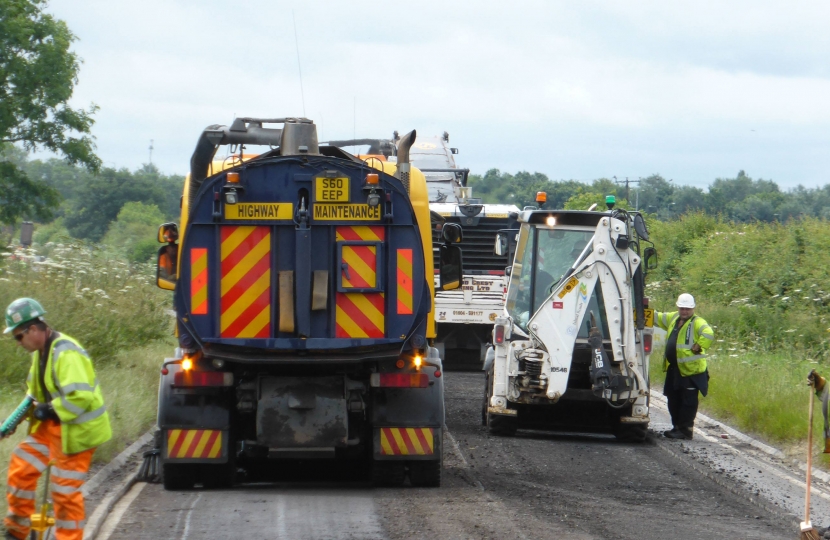
Suffolk has seen over 6,500 potholes repaired since 1 January 2018; with a further 950 scheduled over coming weeks as the county council continues its war on potholes.
Since the start of 2018, Suffolk Highways has received approximately 9,500 pothole reports from members of the public, some of which are duplicates. This is double the number received during the same period last year; demonstrating the impact that the severe winter has had on the county’s road surface.
Suffolk Highways has made some significant steps forward to deal with the high volume of reports. Additional gangs have been brought in to undertake pothole and road repairs across the county, different materials are being used and existing resources are being diverted to help deal with the backlog of reports. Also, a new approach is being trialled where areas with particularly high volumes of reports are ‘blitzed’. This means that inspectors are visiting areas with high concentrations of potholes, many of which are at varying degrees of severity, and ordering repairs for all defects as long as they meet Suffolk Highways’ repairs criteria. They’re then dealt with all at the same time.
Most of the work is then picked up in a co-ordinated approach, with gangs working their way through streets, rather than works being scheduled based on size and required response time. The exception to this is where the location of the defect means complex traffic management is required, such as busy roads or junctions.
The first area addressed was Haverhill where there were over 70 reports of potholes, which resulted in approximately 50 works being ordered. Inspections have also been completed in Bury St Edmunds (60 reports), Withersfield (40), Hundon (30), Newmarket (30) and Pakenham (30). Gangs are currently focused on completing work in Bury St Edmunds and the other locations are currently being scheduled for coming days and weeks.
On 5 March, Suffolk Highways also begun trialling a new approach using a machine called a ‘Roadmender’. The Roadmender is a highways vehicle with an asphalt mixer on the back. It works by keeping the material at a consistent and ideal temperature for compaction and only uses the quantities needed, limiting any waste material. This is an alternative treatment technique and the results are currently being analysed.
In addition to this, on 19 April 2018 Suffolk Highways’ surface dressing programme began with the first of 360 sites. The first step of the programme is to undertake road repairs and preparation work which will include repairing potholes. Once the 2018/19 surface dressing programme is complete, approximately 250 miles of road will have been treated. Surface dressing involves laying stone onto a binding substance and is carried out between April and September.
Surface dressing is a treatment that minimises disruption to road users, local businesses and emergency services. It also improves skidding resistance, helps to make the road waterproof, protects against frost and water damage and is cost-effective normally lasting between 6 to 12 years.
Suffolk Highways will continue to routinely inspect the county’s roads, from once a month for mains roads, through to once a year for more rural, less used roads.
These safety inspections will pick up every defect that meets the intervention level as set out by Suffolk Highways.
